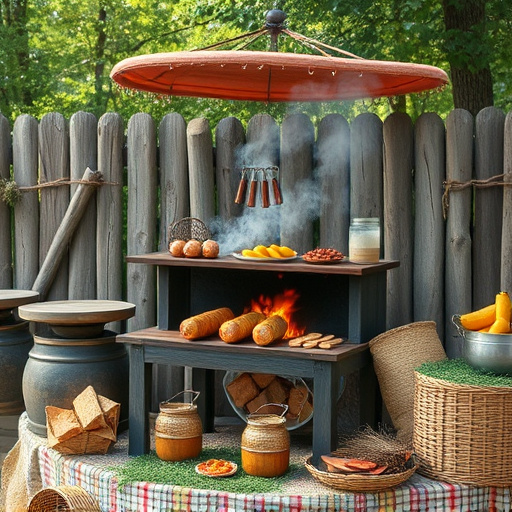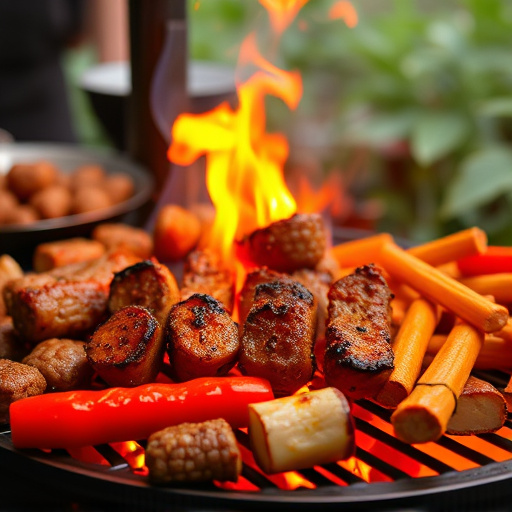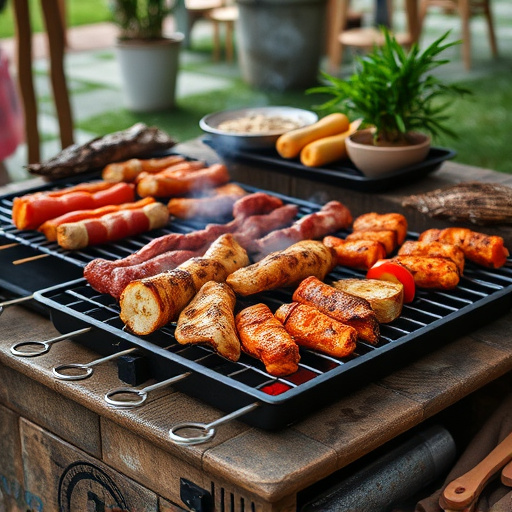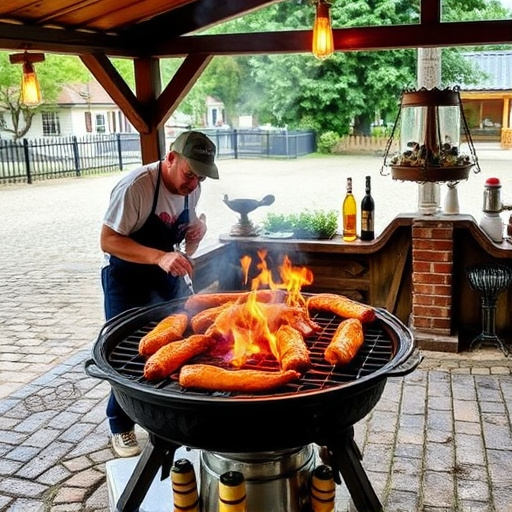Selecting the perfect cut of bone-in pork ribs, trimming excess fat, scoring the meat, and rubbing with salt & pepper prepares them for cooking. Choose between St. Louis-style (meaty), baby back (milder), or spareribs (tender) based on preference. Pre-cooking methods like braising or brining/marinating ensure tender results.
Unleash the flavors of a timeless classic with our indulgent sweet BBQ ribs recipe, perfect for family gatherings and culinary adventures. Discover the secrets behind choosing the right ribs, from St. Louis-style to baby back, and learn pre-cooking techniques for ultimate tenderness. Create a custom BBQ sauce that balances sweetness and smokiness, then master slow-cooking and glazing for that mouthwatering, sticky finish. Finally, learn serving tips to make your ribs the centerpiece of any meal.
- Choosing the Right Ribs and Preparing Them
- – Types of BBQ ribs: St. Louis-style, baby back, spareribs
- – Pre-cooking tips for tender ribs
- – Brining or marinating for extra flavor
Choosing the Right Ribs and Preparing Them

When it comes to a recipe for BBQ ribs, the first step begins with selecting the perfect cut. Look for meaty, bone-in pork ribs with a good layer of fat, which will ensure they remain tender and juicy during the slow cooking process. The quality of your ingredients is key to an indulgent outcome.
Before cooking, prepare your ribs by trimming any excess fat (though keep some for flavor), scoring the meat in a crisscross pattern, and rubbing them with salt and pepper. This simple step enhances the BBQ sauce’s penetration, resulting in mouthwatering, tender ribs.
– Types of BBQ ribs: St. Louis-style, baby back, spareribs

BBQ ribs are a beloved comfort food, with several distinctive styles that cater to diverse tastes. The three primary types are St. Louis-style, baby back, and spareribs. Each boasts unique characteristics, making them suitable for various preferences.
St. Louis-style ribs are known for their meaty, thick cut, often ending at the bone, providing a robust chewing experience. Baby back ribs, as the name suggests, have a smaller, more delicate bone structure, allowing for easier eating and a milder flavor profile. Spareribs, the largest of the three, are characterized by their long, thin cuts, resulting in a tender, fall-off-the-bone texture that’s perfect for slow cooking and basting with delicious sauces. Whether you prefer a hearty meal or a more delicate taste, there’s a BBQ rib style to satisfy your sweet and savory cravings.
– Pre-cooking tips for tender ribs

To achieve tender, mouthwatering BBQ ribs in your recipe for bbq ribs, pre-cooking is key. Start by removing the membrane on the bone side of the rack—this tough layer will prevent the meat from becoming tender. After trimming, dry rub the ribs generously with a mixture of spices like paprika, brown sugar, salt, and pepper. This step not only adds flavor but also helps to break down some of the connective tissues, making the ribs more tender after cooking.
Before baking or grilling, consider slowly braising the ribs in a pot with a little liquid for an hour or two. This step can significantly improve tenderness by rehydrating the meat and helping to pull apart the collagen fibers. Whether you choose to bake them in the oven at a low temperature or slow-cook them on the grill, this pre-cooking process will set the stage for the perfect, melt-in-your-mouth BBQ ribs.
– Brining or marinating for extra flavor

Taking your BBQ ribs to the next level? Consider brining or marinating them before cooking for an explosion of flavors. Brining involves submerging the meat in a salt and sugar solution, which not only tenderizes the ribs but also adds depth and richness to the natural smoky taste. This process helps break down tough connective tissues, ensuring each bite is melt-in-your-mouth delicious.
For a simple yet effective brine, mix equal parts warm water and brown sugar with a generous pinch of salt. Let it cool before pouring it over your ribs. You can also create a savory marinade by combining BBQ sauce, olive oil, garlic, and herbs like thyme or paprika. This method not only enhances the flavor but also acts as a barrier between the meat and the grill, preventing excessive charring.
